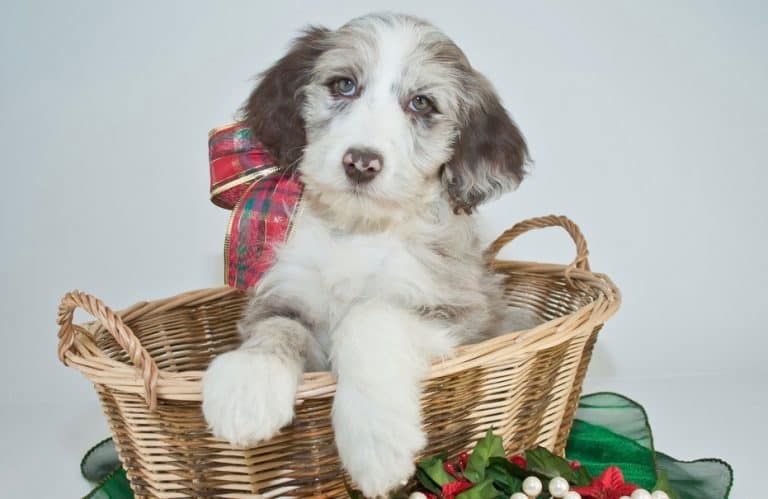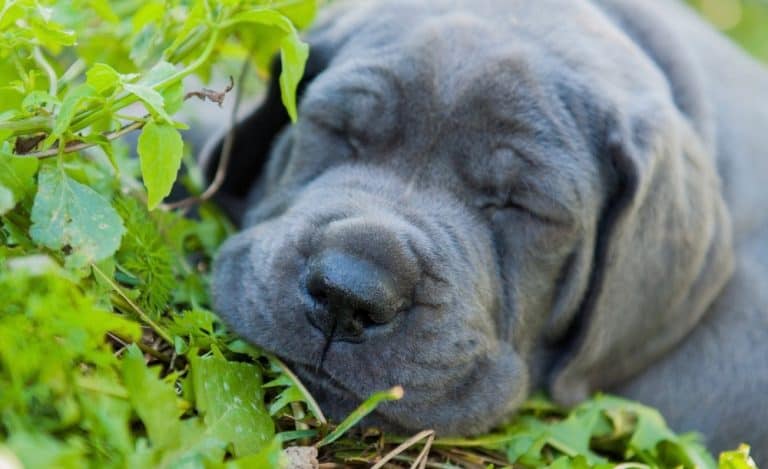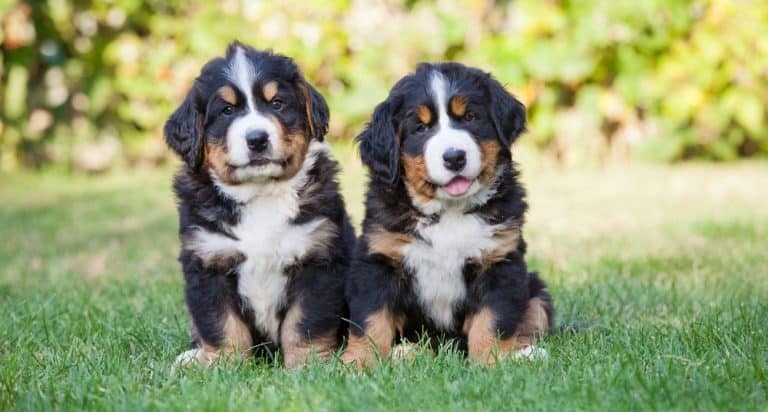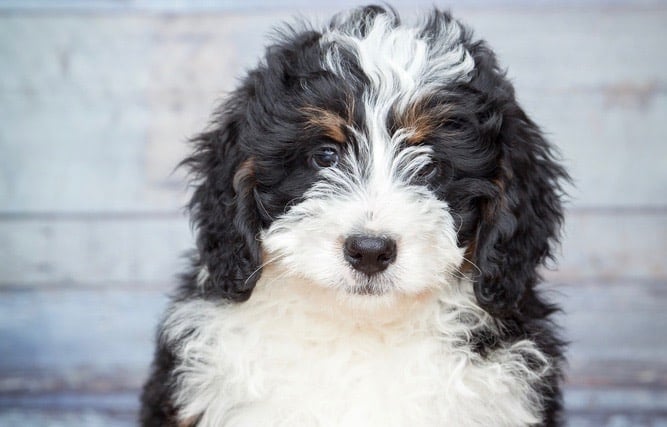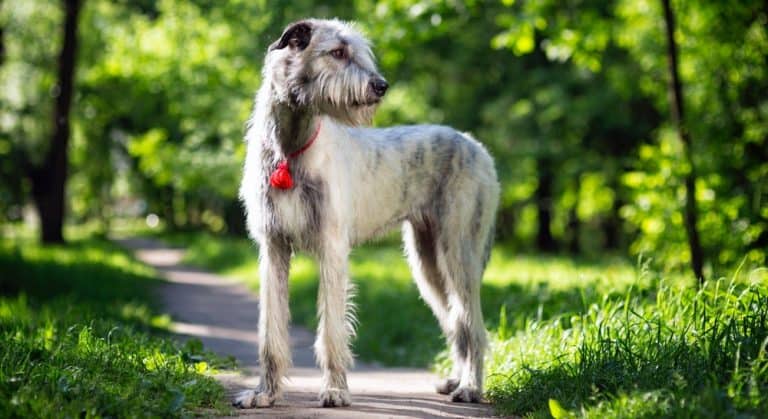Greyhound Growth Chart – Size & Weight Chart
Greyhounds are expert sprinters with sweet and gentle personalities, making them great companions.
Our Greyhound growth chart can be extremely useful for tracking their development because they have a unique build. They are graceful and athletic causing them to be the marvel of many.
Greyhounds have bodies that are well suited for sprinting with aerodynamic and narrow skulls.
Their feet are designed with shock-absorbing pads for running and their lean bodies give them an edge when it comes to speed. With greyhounds, form follows function.
These special dogs hail from as far back as Egypt where they were companions to the pharaohs.
They were also owned by other civilizations like the Tsars and Alexander the Great. Greyhounds can be a source of great joy to their owners once they are treated well.
When Is A Greyhound Fully Grown?
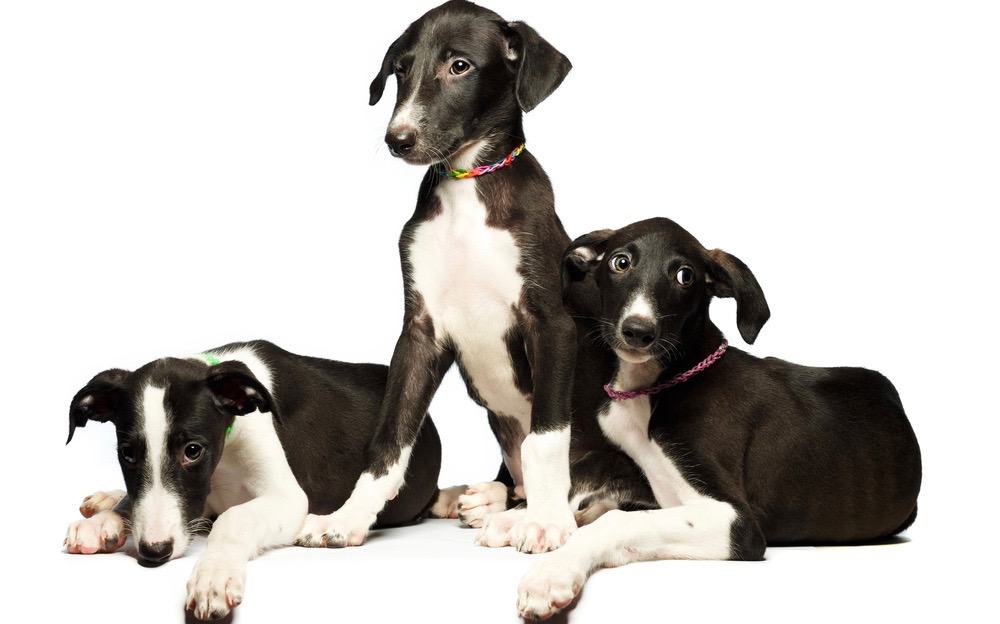
For Greyhounds, it only takes around 13 months to reach physical maturity. Most of them are fully grown by 13 to 14 months, but larger Greyhounds usually take about 18 months so that their chest can be filled out.
You can expect that your Greyhound will grow considerably during his early months in comparison to other dogs.
Many other breeds have staggered growth rates where growth will be more spread out, but greyhounds experience major growth when they are younger and this tends to peter out as they age.
Look out for your Greyhound to be both physically and mentally mature at the age of 3 years old because even though they are fully developed physically, they may still have lingering childish mentalities.
This is not to say that they will no longer be playful in adulthood, it just means that they will be less involved in mischief.
Greyhound Size Chart
Below you will find a Greyhound growth chart that may be useful to you to monitor your dog’s progress.
Since greyhounds have a growth rate that is not typical, this is particularly important. You need to ensure that your Greyhound is developing in the way that he should.
It is important to note that there are two main types of greyhounds. These are the racing Greyhound and the show Greyhound. The two only share minute differences when it comes to size. But these should be noted for greater accuracy in their growth estimations.
The racing greyhounds are usually a bit smaller than the show greyhounds by the time they reach adulthood. These are measurements based on averages, so exceptions do occur.
Keep in mind that genetics play a major role in the ultimate size of your Greyhound, so the size of his parents is a greater predicting factor.
Also, note that males and females also have different sizes because the males are slightly larger. Please use the growth charts as a guide to help you to navigate the development of your Greyhound.
To use this Greyhound weight chart you must have an accurate recollection of your dog’s age and find the closest age that coincides with this on the charts. Then simply match this age with the weight estimation that goes along with it.
Greyhound Weight Chart
| Age | Male Weight (lbs) | Female Weight (lbs) |
|---|---|---|
| 3 Months | 22 -31 lbs | 22 - 27 lbs |
| 4 Months | 28 - 39 lbs | 28 - 35 lbs |
| 5 Months | 35 - 50 lbs | 37 - 44 lbs |
| 6 Months | 42 - 55 lbs | 41 - 52 lbs |
| 7 Months | 46 - 59 lbs | 44 - 55 lbs |
| 8 Months | 50 - 70 lbs | 48 - 59 lbs |
| 9 Months | 52 - 74 lbs | 50 - 63 lbs |
| 10 Months | 55 - 77 lbs | 52 - 66 lbs |
| 11 Months | 55 - 79 lbs | 54 - 68 lbs |
| 12 Months | 55 - 80 lbs | 55 - 70 lbs |
| 13 Months | 55 - 82 lbs | 55 - 71 lbs |
| 16 Months | 55 - 85 lbs | 55 - 74 lbs |
Greyhound Growth Chart – What To Expect
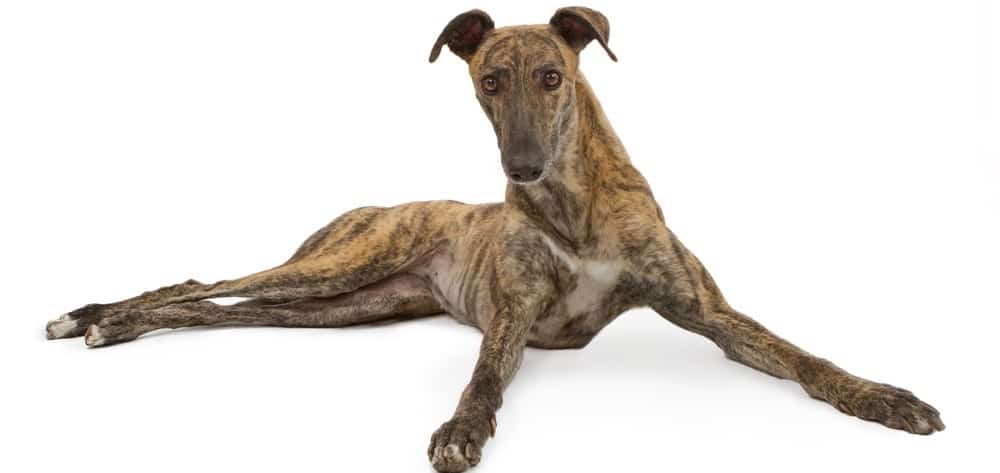
Birth – 2 Weeks
The Greyhounds are typically born in litter sizes that range between 1 and 12 puppies. The average is usually 8 and the amount of puppies is determined by the mother’s age and overall health.
These tiny puppies spend the first two weeks of their lives in the primary care of their mothers who tends to their needs of nourishment and warmth.
If for some reason the mother is unable to provide these needs you must take over end tend to the Greyhound pup.
3 Weeks – 12 Weeks
Your greyhound puppy will undergo rapid growth and many changes. Weaning from his mother’s milk will be a major milestone in his development as he is introduced to solid foods.
Care should be taken at this time because nourishment is important to his development.
Make sure that the food is soft enough and of the right size. It should be watery in texture because this would be closer to the milk he was receiving from his mother.
At the end of this stage, males are usually around 20 to 31 pounds while females are 22 to 27 pounds.
4 Months – 9 Months
You should anticipate that your greyhound puppy will become much larger and gain better control of his muscular functions. He will be faster and stronger as he explores his environment.
When he is around six months, you can expect him to weigh around 42 to 58 lb for males and 41 to 52 lb for females. They should both stand at around 20 inches.
10 Months – 18 Months
During this time you should expect that your greyhounds will be a bit hyperactive and bubbling with energy.
He will begin to calm down only at the end of this stage. Socialization is important so that he learns behaviors acceptable to you.
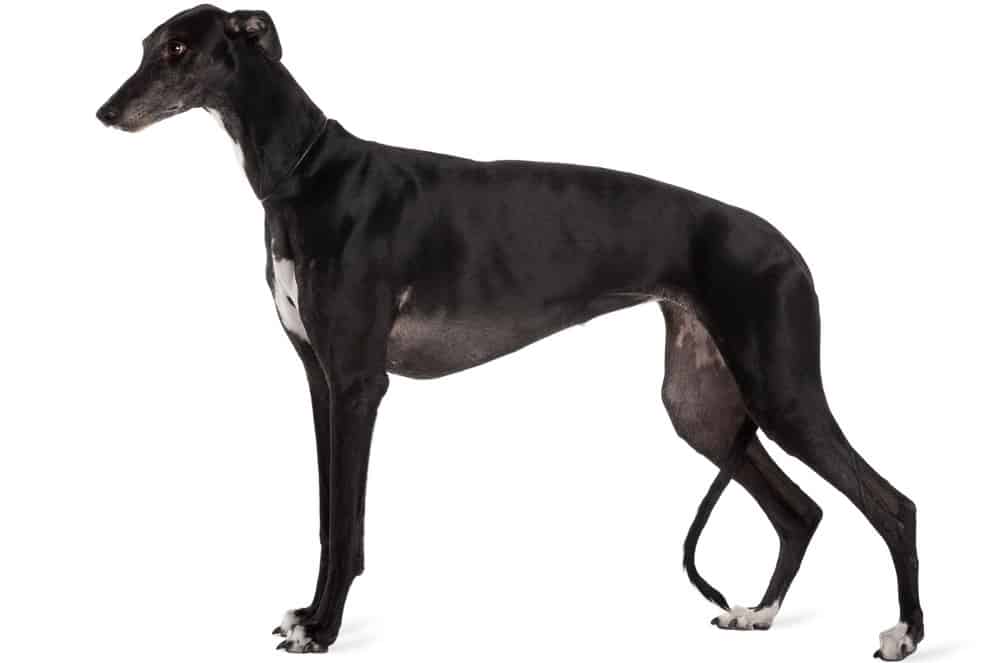
Look out for your Greyhound reaching sexual maturity as he begins to display behaviors that indicate him being in heat. Some female Greyhounds have changes in appetite and males usually urinate everywhere.
At the 12-year mark, the male Greyhound usually weighs around 55 to 80 lb while the females usually weigh around 55 to 70 lb.
Adult
Even though a greyhound may be physically mature, its mentality may still have further growth. When your Greyhound is around 2 to 3 years old, you can expect mental maturity.
So before this, you should invest in proper training. They will still need physical activity and playtime, but they would have left behind all signs of puppyhood.
How Big Do Greyhounds Get?
There are a few ways that you can tell the eventual size of your Greyhound. But first, you should know that if your Greyhound is less than 12 months old he definitely has more physical maturity to complete.
After the age of 14 months, you can expect the cessation of growth also some Greyhounds will continue to grow until 18 months.
You can get a good approximation by discussing with your breeder about your dog’s parents as well as the little size. This information can point you in the right direction when it comes to his ultimate size.
Many people also look at a dog’s paws as an indication of the amount of growth they have left to complete. When your dog’s paws are a bit larger in proportion to the rest of his body then he still has growing to do.
A DNA test is also helpful because it can map the genealogy of your Greyhound so that you will know if there are potentially any other breeds in his ancestry that will affect his size.
Will Neutering/Spaying My Greyhound Affect His Growth?
The topic of spaying and neutering dogs has been debated by many. Some believe that spaying and neutering have nothing to do with your dog’s growth.
However, studies have shown that’s neutering male dogs affects the testosterone in their bodies, therefore, affecting their growth. This effect is the growth also affects their joints leading to complications.
Spaying and neutering also have many upsides because they can remove the risk of unwanted pregnancies which can affect your dog’s health and result in your expense.
Spaying and neutering have also been shown to reduce the risk of certain cancers.
Nonetheless, you must consider what is best for your Greyhound. It is better to have him spayed or neutered at the age of 18 months or older because at a younger age could have more risk than reward.
Have a talk with your veterinarian who may be able to give better advice based on your specific dog.
Greyhound Height Chart
Greyhound owners will do well to take proper account of their dog’s growth by measuring their size and age through their lifespan. This will ensure that he is developing normally.
You can measure your Greyhound’s height by using a measuring tape that is draped from the floor to his withers.

If you don’t know what his withers are, it is simply the highest point of his shoulder blades. Make sure he is standing up straight and record this measurement.
Keep in mind that racing greyhounds are usually a bit smaller in height with 25 to 29 inches but show greyhounds 26 to 30 in adulthood.
Whippet vs Greyhound Size
Whippet dogs are usually smaller in weight and height than greyhounds. In adulthood, whippets are approximately 19 to 22 which is smaller than the greyhounds 25 to 30 inches.
Whippet dogs also weigh less with 25 to 40 lb in contrast to the Greyhounds 65 to 70 lb.
People always confuse the two because they have similar appearances. They both have narrow muscles and rose-shaped ears. They are also both good at running.
Factors That Affect Greyhound Growth
Genetics & Gender
Genetics ultimately play a huge role in the growth of your greyhounds because the size of a dog’s parents affects its current and future size. Genetics also determine coat and eye color.
Gender is also important since male greyhounds are slightly larger than female greyhounds. This is true throughout their growth and adulthood.
Nutrition
Adequate nutrition is of utmost importance especially when your Greyhound is in its formative years. They need to be fed properly so that they can reach adulthood in proper health.
Feed your Greyhound at least 2.5 to 4 cups of quality dry dog food. This portion should be split into two meals, but females can survive on a bit less than this because they are smaller.

Always keep in mind your dog’s age, metabolism, build end exercise level when feeding.
Physical Activity & Health
Many consider the Greyhound to be the cheetah of dogs. Even though they may enjoy lounging around on hot days, they do enjoy quite a lot of exercise.
They love displaying their incredible speed and energetic enthusiasm. They make great hunters so do not deprive them of regular exercise.
Exercise will strengthen their bones and muscles as well as improve their mood overall. They will be most happy in large fenced yards where they can run around.
What If My Greyhound Is Not The Right Weight
Because greyhounds are typically lean dogs it may be concerning to owners if they are not particularly robust in their build. Some owners may wonder if their Greyhound is the right weight.
This is no easy question because of all the factors that determine the growth and ultimate size of your Greyhound.
According to the American Kennel Club, Greyhound males and females typically weigh between 60 and 70 lb in adulthood. They should have a height of 27 to 30 in.
Keeping in mind that there are two different types of greyhounds you must leave room for error. Especially since males and females tend to weigh differently.
Outside this, you can look at a BCS – body condition score for your Greyhound and look for key areas of his body to determine whether he is underweight or overweight.
Because Greyhounds are not overly fluffy you can observe his profile and tell if he is underweight by looking at his rib cage.
If you can see his ribs too easily and there is a sunken area right before his hind legs then you know that is underweight.
Run your hands along his rib cage and if you do not feel any fat then he is underweight and should check with a veterinarian as soon as possible.
Greyhound Genetics And Common Health Problems
Greyhounds are usually healthy, but they are still plagued by several diseases that you need to look out for. Because they are deep-chested they are usually prone to gastric torsion and bloating.
This is sudden twisting and enlargement of the stomach that may be fatal. If you notice any symptoms of bloating you should seek medical assistance as soon as possible.
Greyhounds are also susceptible to a few cardiac problems and eye conditions.
Greyhounds are also more prone to hereditary conditions like bone cancer, arthritis, and deafness. All of these conditions can be treated if caught early.
By feeding your Greyhound properly and making sure they have adequate amounts of exercise, you can eliminate these risks.
But make sure you look for the symptoms so that they may be treated early. Also, only look to responsible breeders when purchasing your Greyhound.
Final Words
Greyhounds still need proper grooming even though they do not shed as much as other breeds.
Make sure that you give them regular baths, as well as weekly brushes and rubdowns with a damp cloth or glove. Trim your Greyhound’s nails, clean his ears and brush his teeth.
Training is also of utmost importance so that he can learn behaviors that fit with your lifestyle.
They are intelligent so they take well to training. By implementing these habits into your Greyhounds schedule, you will be able to have a faithful companion for a long time.

